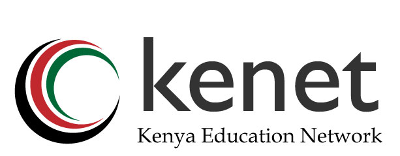You are here
Shared Services
KENET members enjoy both connectivity bundled services and enterprise services.
1. KENET Connectivity Bundled Services
The connectivity bundled services are available to connected members at no additional fee
KENET operates three data centers that host the network equipment used for providing broadband connectivity to the KENET member institutions. The data centres also provide community cloud services (dubbed enterprise services) to the KENET community. These services include co-location services, storage as a service and hosting services on dedicated virtual private servers. Some of the specialized services offered to member institutions include disaster recovery services, web hosting, DNS services, hosting of elearning systems among others.
The data centres are located at different universities namely; university of Nairobi (UON), United States International University (USIU) – Africa and Catholic University of Eastern Africa (CUEA). The data centre at UON has a capacity of 10 server cabinet racks; USIU has 18 while CUEA has 12 rack spaces. Institutions can therefore co-locate full cabinets or bare metal servers in any of the data centres based on their geographical preference.
KENET runs EMC storage infrastructure in the data centres. UON and USIU data centres have storage capacity of 83TB each. The storage systems have unified implementations supporting both file and block storage with both Fibre Channel and iSCSI connectivity to the back end and supports NFS, CIFS, pNFS, FC, iSCSCI and FCoE protocols. Currently the systems are implemented to use FC protocol for block storage while file storage is accessible using IP file shares. The storage system back ends are able to scale to 1PB of capacity per site, however based on the current deployment at KENET; the remaining expansion slots are able to accommodate up to 500TB of usable capacity per site.
Other notable features offered by the implemented storage system include redundant battery backed cache with dual controllers working in active/active load balanced mode; fully automated storage tiering that enables migration to high performance drives or high capacity drives based on user access, support for 15K RMP SAS and 7.2K RMP NL-SAS disks; quota management and auditing; among others.
DR allows an organization to maintain or quickly resume mission-critical functions following a disaster. At a DR site, an organization can recover and restore its technology infrastructure and operations when its primary data center is unavailable.
Examples of disaster include but are not limited to fire, theft/vandalism, loss or corruption of critical application (s), cyber attack, environmental hazards e.g flooding, power problems, cooling failure etc.
Setting up a DR site is normally part of the Business Continuity Plan of an organization. External auditors, internal auditors, and information systems auditors often want to check that you institution has an operational DR site for risk mitigation. Insurance underwriters also want to know if you have an operational DR site, it could lower your premiums. The business risks are not only due to a cybersecurity attack but could be due to fire, flooding, rogue employees, and data center equipment failure.
KENET has operational data centers with community cloud infrastructure at USIU, UoN and CUEA that could be used for setting up disaster recovery sites for members. However, it is possible for a member institution to setup their DR sites at other locations outside the KENET network but that would attract higher communications costs between the primary site at your campus and the off-site DR site. Note that there is no need for a disaster recovery site that you cannot access at high speed in the event of a disaster (including restoration from the off-site backup site).
The actual cost depends on the requirements of a particular institution. KENET engineers are available to discuss the requirements and the associated costs and to support your ICT team with implementation of the DR site. The costs on Table 1 are competitive with Amazon Web Services or Microsoft Azure costs but also attract much lower communication costs between the main campus and the DR site (data centers are outside Africa). We have excluded the dedicated link costs in Table 1 because it depends on the location of the main campus or headquarters of the member institution. For example, the communication costs are very low for campuses on last mile KENET fiber or Liquid Telecom fiber.
Table 1: Indicative recurrent costs for different DR options
|
No |
Item |
Units |
Monthly Recurrent Cost in US$ |
Annual Cost in US$ |
|
1 |
Leased Off-site backup storage |
1 TB storage |
100 |
1,200 |
|
2 |
Leased Virtual Private Server with storage |
(8GB RAM, 2vCPU, storage 1 TB, 8 GB RAM) |
178 |
2,136 |
|
3 |
Hosting institution’s DR site server at KENET data center (also called collocation of server) |
2U rack space |
100 |
1200 |
|
4 |
Hosting a full-rack cabinet of institution’s DR servers and storage and other servers (lockable) |
1 rack |
2,100 |
25,200 |
The goal of KENET is to support the implementation of your Business Continue Plan at affordable recurrent and non-recurrent costs.
